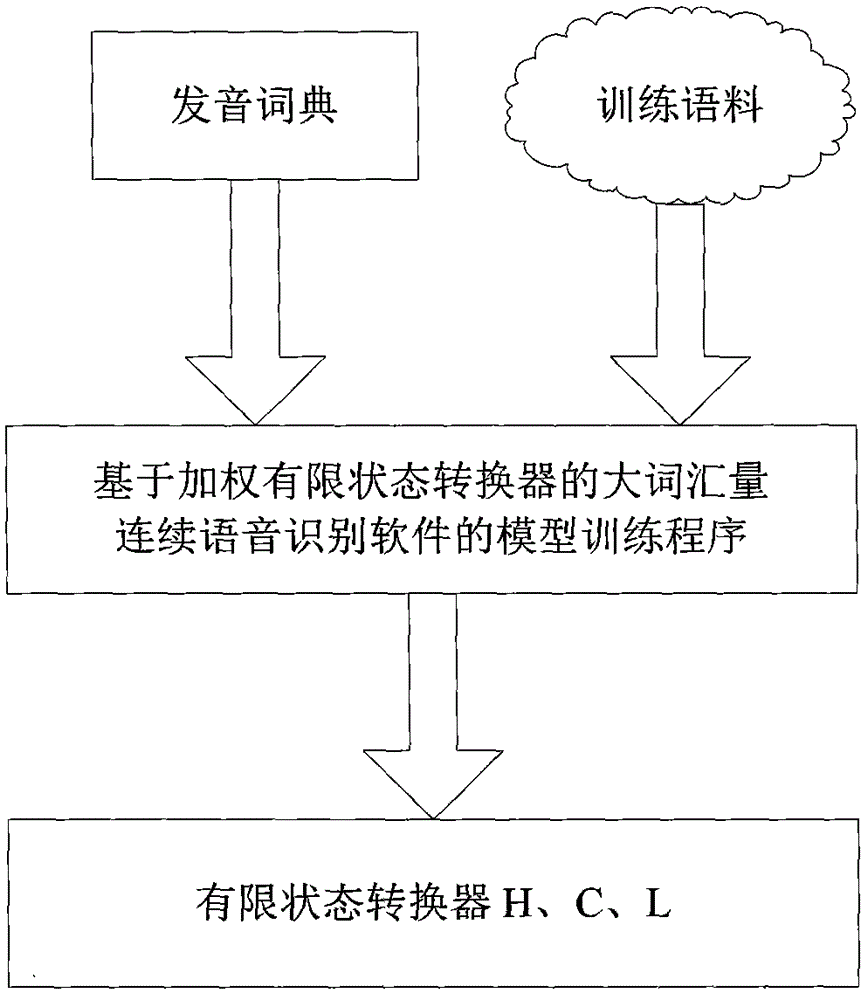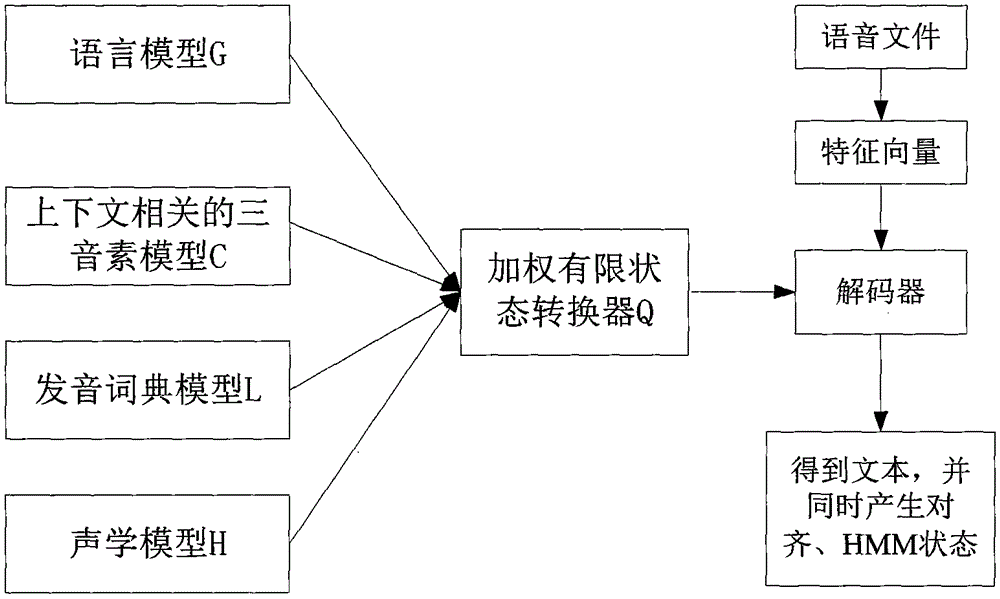Phonetic-level low power consumption spoken language evaluation and defect diagnosis method without standard pronunciation
An evaluation method and low power consumption technology, applied in speech analysis, instruments, etc., can solve problems such as the quality of pronunciation that cannot be objectively scored, switching troubles, and students not knowing how to improve, so as to avoid network traffic consumption and reduce load and consumption. The effect of reducing power consumption and hardware requirements
- Summary
- Abstract
- Description
- Claims
- Application Information
AI Technical Summary
Problems solved by technology
Method used
Image
Examples
Embodiment Construction
[0030] When introducing the embodiments of the present invention, it is necessary to introduce related technologies in the field of speech processing, so as to facilitate a clearer understanding of the present invention.
[0031] Such as figure 1 As shown, the process of processing speech processing and extracting feature vectors is roughly divided into the following three steps:
[0032] i, the sound wave data (waveform) of the original collected sound about time;
[0033] ii. Define a frame with a fixed time length (such as 25ms), and each frame moves forward another time interval (such as 10ms), so that there is a certain overlap between frames (such as 15ms):
[0034] iii. Perform signal processing on each frame to obtain the feature vector (feature vector) corresponding to each frame. For example, the common practice in the industry is to use the MFCC (Mel-Frequency Cepstral Coefficient) feature and its The first-order and second-order difference components have a total...
PUM
 Login to View More
Login to View More Abstract
Description
Claims
Application Information
 Login to View More
Login to View More - R&D
- Intellectual Property
- Life Sciences
- Materials
- Tech Scout
- Unparalleled Data Quality
- Higher Quality Content
- 60% Fewer Hallucinations
Browse by: Latest US Patents, China's latest patents, Technical Efficacy Thesaurus, Application Domain, Technology Topic, Popular Technical Reports.
© 2025 PatSnap. All rights reserved.Legal|Privacy policy|Modern Slavery Act Transparency Statement|Sitemap|About US| Contact US: help@patsnap.com



